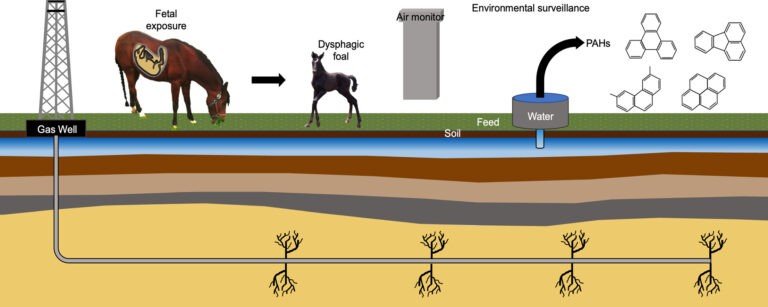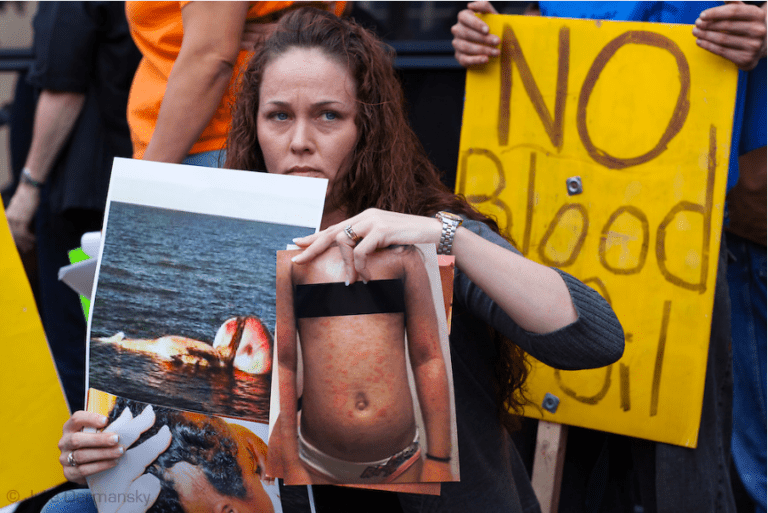Scientific Studies/Journals
A First Comprehensive Baseline of Hydrocarbon Pollution in Gulf of Mexico Fishes (Scientific Reports)
“Gulf-wide fish surveys over 2011–2018 found widespread oil contamination. One hot spot was in the northern Gulf where the 2010 BP blowout spewed oil, and where the Mississippi River, carrying pollution from 40% of the continental U.S., meets the Gulf. The lead scientist commented, “We actually haven’t found one oil-free fish yet.” Read the full…
Read MoreCancer Incidence and Mortality among Petroleum Industry Workers and Residents Living in Oil Producing Communities: A Systematic Review and Meta-Analysis (Onyije et al., 2021;)
Link to Study
Read MoreA Coupled Lagrangian-Earth System Model for Predicting Oil Photooxidation.
A Coupled Lagrangian-Earth System Model for Predicting Oil Photooxidation (Faz, Failllettaz & Paris) February 19, 2021
Read MoreCauses and consequences of micronuclei (Krupina et al., 2021)
Micronuclei are small membrane-bounded compartments with a DNA content encapsulated by a nuclear envelope and spatially separated from the primary nucleus. Micronuclei have long been linked to chromosome instability, genome rearrangements, and mutagenesis. They are frequently found in cancers, during senescence, and after genotoxic stress. Compromised integrity of the micronuclear envelope delays or disrupts DNA…
Read MoreTranscriptome profiling of blood from common bottlenose dolphins (Tursiops truncatus) in the northern Gulf of Mexico to enhance health assessment capabilities
Link to full study here. Abstract Inhalation of PM2.5, particles with an aerodynamic diameter <2.5 μm, from sea spray after crude oil spills could present serious health concerns. The addition of dispersants to effectively spread the crude oil throughout the water column has been practiced in recent years. Here, we investigated the possibility of an…
Read MoreEnvironmental surveillance and adverse neonatal health outcomes in foals born near unconventional natural gas development activity
Read the full study
Read MoreE&E News: Landmark study links oil, gas wells with low birth weights
“Women who lived near oil and gas wells in California during pregnancy were more likely to deliver underweight babies, according to a first-of-its-kind study from the University of California, Berkeley. Analyzing nearly 3 million birth certificates in the state, researchers found that newborns in rural areas between 2006 and 2015 were 40% more likely…
Read MoreImpact of dispersant on crude oil content of airborne fine particulate matter emitted from seawater after an oil spill (PubMed)
Read the 5/20/2021 study PDF Read the 10/20/2021 study PDF Abstract “Inhalation of PM2.5, particles with an aerodynamic diameter <2.5 μm, from sea spray after crude oil spills could present serious health concerns. The addition of dispersants to effectively spread the crude oil throughout the water column has been practiced in recent years. Here,…
Read MoreImpact of dispersant on crude oil content of airborne fine particulate matter emitted from seawater after an oil spill
Link to Full Study Inhalation of PM2.5, particles with an aerodynamic diameter <2.5 μm, from sea spray after crude oil spills could present serious health concerns. The addition of dispersants to effectively spread the crude oil throughout the water column has been practiced in recent years. Here, we investigated the possibility of an increase in…
Read MoreWhy sunlight matters for marine oil spills.
Why sunlight matters for marine oil spills. (Ward, Reddy & Overton) Apr 28, 2020
Read More

